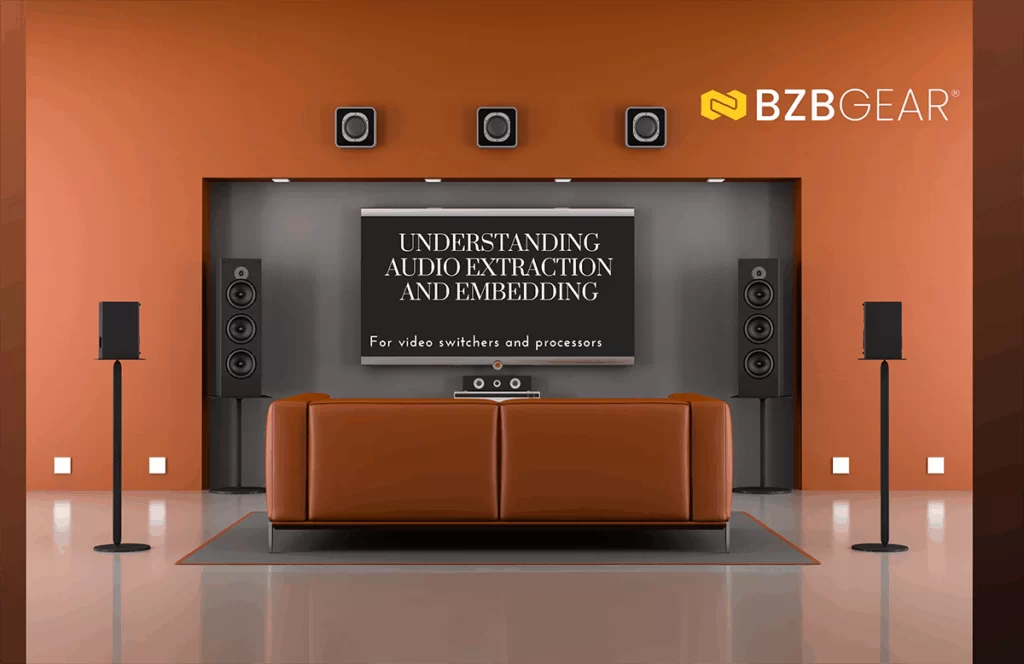How HDMI Audio Extracting and Embedding Works: Video Switchers and Processors

If you find yourself in possession of an HDMI video switcher or processor and are now contemplating the intricacies of audio handling, you're in the right place. Many of these devices come equipped with features like audio extraction and embedding, providing users with versatile options for managing audio signals. In this article, we will delve into the world of audio extraction and embedding, demystifying the processes involved.
Understanding Audio Extraction - Analog (3.5mm):
When a HDMI video switcher or processor supports audio extraction, it grants you the ability to redirect the audio from HDMI inputs to an external sound system, such as speakers. The conventional audio signal from the HDMI source usually goes directly to the designated output. The process involves connecting the HDMI unit to a speaker through the 3.5mm port, which can be as straightforward as a direct connection or, in the case of a large-scale matrix switcher, utilizing multiple HDMI inputs with designated 3.5mm audio input ports. This level of control allows you to dictate the destination of your audio and choose which audio source is active.
Understanding Audio Extraction - Digital (Coaxial - RCA, Optical - TOSLINK):
Similar to analog audio, digital audio extraction is possible with these devices, often labeled as SPDIF extraction. SPDIF, or Sony/Philips Digital Interface, is a digital audio interface used for transmitting audio signals between devices. This process involves extracting digital audio through coaxial cables with RCA connectors or optical cables with TOSLINK connectors. SPDIF ensures the transmission of uncompressed digital audio signals, preserving the quality during transfer. It supports various audio formats, including stereo and multichannel, making it a prevalent choice in home theater systems and professional audio setups.
Audio Embedding Explained:
In contrast to audio extraction, where the audio signal from HDMI inputs is directed to an external sound source, audio embedding involves taking audio from an external source and playing it over the HDMI input(s). This is achieved by connecting external devices like laptops to the HDMI unit via the 3.5mm jack and playing audio files or streaming music from platforms such as YouTube. Audio embedding enhances the flexibility of your setup, allowing you to integrate external audio seamlessly into your HDMI-based system.
Final Thoughts
Navigating the realm of audio extraction and embedding in HDMI video switchers and processors might seem complex initially, but understanding these processes empowers users to tailor their audio configurations to suit their preferences. Whether you're orchestrating a home theater system or managing professional audio setups, the ability to control and optimize audio signals adds a valuable dimension to your multimedia experience. If you have any questions about your audio setup, don’t hesitate to reach out to a BZBGEAR representative!
8.00 a.m. - 5.00 p.m. (PST)
10.00 a.m. - 3.00 p.m. (PST)
(by appointment only)



